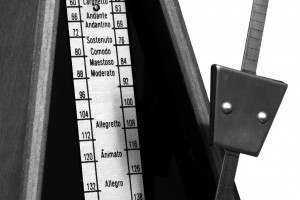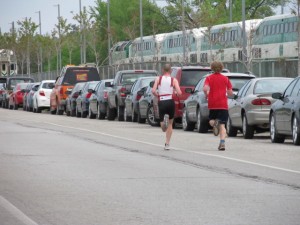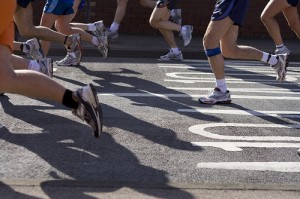If for some reason you’re looking to give your lactic acid thresholds a really nice workout, then there is nothing like a quick five km run with a metronome in your hand.
Apparently nearly all elite runners, whether they run 5ks or marathons, run at a cadence of around 180 steps per minute. The variance in speed tends to be a function of stride length, rather than rate. So, I grabbed my metronome from a music stand and went out on a quick 5k loop.
It was an intense experience. There’s no hiding from the metronome, it’s like having a drill instructor yell at you continuously as you run. The moment my stride faltered I felt myself missing the rhythm, and I had to scurry to get back on track. Running slowly didn’t help me escape it, as I still had to work to maintain the fast turnover.
So, not a relaxing evening jog, but I think a productive exercise that I will repeat from time to time.
Note: an alternative to carrying a metronome in your hand is to download a fixed-tempo mix from podrunner, a site that carries a whole bunch of hour-long mixes set at anything from 140 to 180 BPM.


